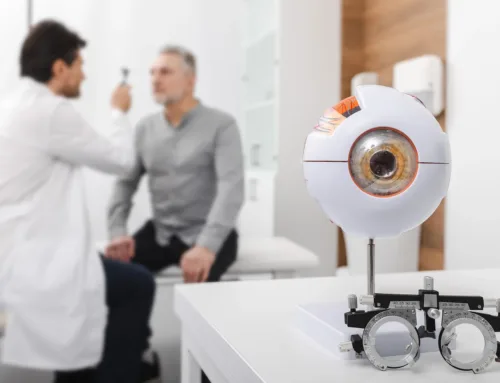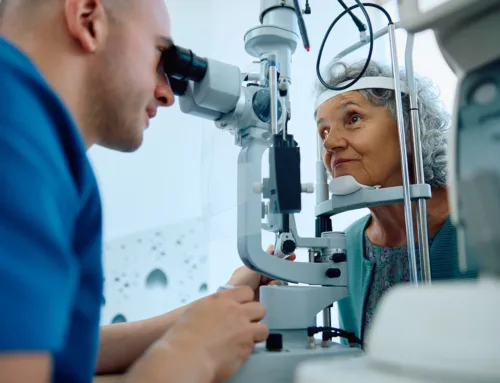Learn How Removal Works & Why You Need Swift Treatment
Aging, while wonderful, comes with its own host of challenges that can significantly affect your daily life. One of the most notorious of these trials is cataracts , a vision condition known to afflict senior adults , which clouds your eye’s lens and gradually impairs vision. When left untreated, this clouding causes blurred vision and light sensitivity that worsens the longer it progresses, making swift treatment crucial to restoring and preserving the clarity of your sight. Below we’ll be diving into the practical details of how cataracts are diagnosed, why cataract removal is necessary, and how cataract removal works.
How Are Cataracts Diagnosed?
Cataracts are often invisible to the naked eye in all but extreme cases, so watching for symptoms is the best way to catch them early. Chronic blurred vision, headaches and sensitivity to bright lights are some key indicators that you should see your eye doctor and get referred to an ophthalmologist. From there, your eyes will be examined and measured with specialized equipment to determine how to proceed. Most often, cataract removal via surgery is recommended as the best option.
Why Is Cataract Removal Necessary?
The impact that cataracts have on vision are wide-ranging, hindering your ability to perform simple tasks like reading, or tasks that require your peripheral vision like navigating crowded areas, crossing the street, or playing sports. As cataracts progress, they’ll begin impacting your ability to drive, watch movies or theater performances, spot danger, or monitor your children and pets. These hindrances aside, leaving cataracts untreated will only worsen their side effects, leading to serious impairments, which is why swift cataract removal is necessary.
What Happens With Untreated Cataracts?
The lens of the eye is a small, densely packed shell of clear proteins that continue to grow and divide over time, just like the rest of your cells. However, with cataracts, these proteins remain in the enclosed space of your eye’s lens, causing them to build up and eventually thicken the lens. As a result, the lens will begin to change color, becoming a noticeable cataract. If left untreated , the cataract will continue to thicken, gradually taking up more of your lens and affecting how both light and fluid flow through the eye.
How Does Cataract Removal Work?
Cataract removal is a relatively simple and short procedure , typically lasting no more than an hour. To prepare, your pupils will be dilated with eye drops and the surrounding area numbed. You’ll then be lightly sedated, meaning you may still remain somewhat awake, albeit groggy and largely unaware. You can learn about preparing for your cataract removal through this guide.
There are two methods used in cataract removal , each with its own variation and suited for different scenarios.
- Phacoemulsification. The most commonly used procedure, a tiny incision is made to insert a probe which emits ultrasonic waves. This breaks apart the cataract and allows the pieces to be suctioned away, leaving an opening for a new lens to be inserted. Phacoemulsification leaves the back of the lens, called the lens capsule, intact, giving the new lens a secure place to rest. This can all be done manually, or a laser can assist by dividing and softening the cataract, allowing for the use of fewer ultrasonic waves and speedier healing.
- Extracapsular Cataract Extraction. Although rarely used or necessary, some specific eye conditions may require the cataract to be removed as a single piece. This requires a larger incision and special tools to achieve, but also leaves the lens capsule intact for placement of the new lens. Alternatively, an A-shaped incision may be made, resulting in a similar outcome to phacoemulsification. Regardless of the incision used, stitches are required for recovery.
Your eyes will take time to adjust, and it’s common to feel a minor itch or discomfort during recovery, but you should see more clearly within just a few days.. Your doctor may require you to wear an eye patch or shield, and will schedule follow-up visits for two days, one week and one month after the procedure to monitor progress.
Conclusion
The concept of surgery and cataract removal may seem scary, but it’s important to remember that any loss of vision is a loss of independence and your ability to perform everyday tasks. If you experience blurred vision, light sensitivity or find yourself changing your lifestyle to accommodate your eyes, speak to your eye doctor and see if cataract removal is necessary for you.











